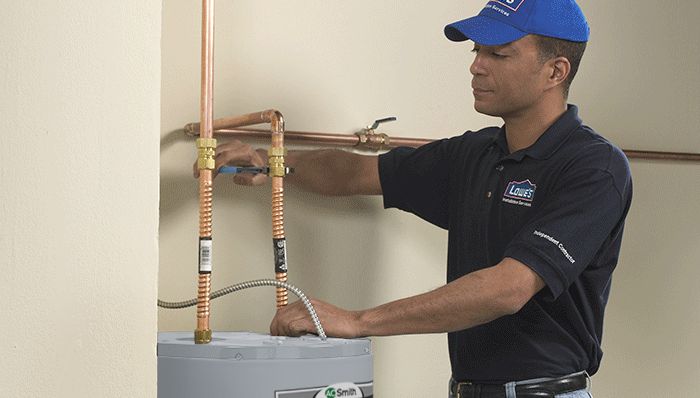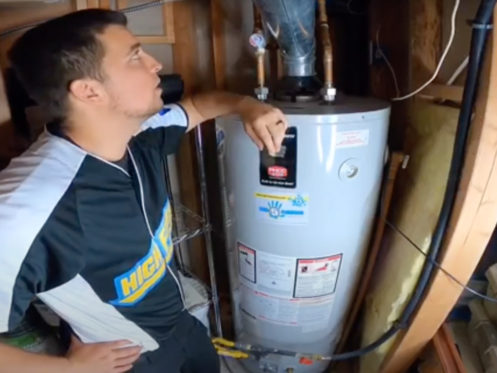Effective Techniques for Maintaining Your Home's Hot Water SystemMaintaining Your Home's Hot Water System: Key TipsTips on How to Maintain Your Home's Hot Water System in Good Condition
Effective Techniques for Maintaining Your Home's Hot Water SystemMaintaining Your Home's Hot Water System: Key TipsTips on How to Maintain Your Home's Hot Water System in Good Condition
Blog Article
They are making a few good pointers on How to Maintain Your Water Heater & Prolong its Life in general in the article underneath.

Hot water is necessary for daily convenience, whether it's for a revitalizing shower or washing dishes. To ensure your warm water system runs successfully and lasts longer, regular upkeep is vital. This post supplies sensible suggestions and understandings on how to preserve your home's warm water system to avoid disturbances and costly fixings.
Introduction
Preserving your home's warm water system might appear daunting, however with a couple of basic steps, you can guarantee it runs smoothly for several years to find. This guide covers every little thing from understanding your warm water system to do it yourself maintenance suggestions and understanding when to call specialist aid.
Importance of Preserving Your Hot Water System
Routine upkeep not just expands the life-span of your hot water system but also ensures it operates effectively. Disregarding upkeep can result in reduced effectiveness, greater power expenses, and also early failing of the system.
Indicators Your Warm Water System Needs Maintenance
Knowing when your hot water system needs attention can prevent major problems. Look out for indications such as irregular water temperature, unusual noises from the heating unit, or corroded water.
Understanding Your Hot Water System
Prior to diving into maintenance jobs, it's handy to recognize the standard parts of your warm water system. Normally, this consists of the water heater itself, pipes, anode rods, and temperature level controls.
Month-to-month Upkeep Tasks
Normal month-to-month checks can aid capture small problems prior to they escalate.
Flushing the Water Heater
Purging your water heater eliminates debris accumulation, enhancing effectiveness and prolonging its life.
Checking and Replacing Anode Rods
Anode rods prevent corrosion inside the container. Evaluating and changing them when worn is important.
Evaluating and Readjusting Temperature Settings
Readjusting the temperature level settings guarantees optimal performance and safety and security.
Do It Yourself Tips for Maintenance
You can perform numerous maintenance tasks yourself to maintain your hot water system in top problem.
Checking for Leaks
Regularly check pipelines and connections for leakages, as these can cause water damage and greater expenses.
Testing Stress Relief Valves
Evaluating the pressure relief valve guarantees it operates appropriately and stops too much pressure build-up.
Protecting Pipelines
Protecting warm water pipes lowers warm loss and can save power.
When to Call a Specialist
While do it yourself maintenance is useful, some issues need professional knowledge.
Facility Problems Calling For Professional Aid
Examples include major leakages, electrical problems, or if your hot water heater is constantly underperforming.
Routine Professional Upkeep Advantages
Professional maintenance can consist of thorough inspections, tune-ups, and guaranteeing compliance with security criteria.
Conclusion
Routine upkeep of your home's warm water system is vital for performance, durability, and price savings. By complying with these pointers and knowing when to seek professional assistance, you can make certain a dependable supply of warm water without unanticipated disruptions.
Water Heater Maintenance: The Basics
Maintaining your water heater will ensure it operates efficiently and has a longer lifespan. Neglecting regular maintenance can lead to costly repairs and an even bigger chunk of your savings if you have to replace it sooner than necessary. But there’s good news: Most water heater maintenance tasks are relatively simple and easy for homeowners with basic DIY skills.
Flush the Water Heater
Over time, sediment and minerals can build up in the tank, reducing its efficiency and potentially causing damage. To flush the tank, turn off the power or gas supply, attach a hose to the drain valve near the bottom and open the valve to drain the water until it runs clear. Ideally, flush the tank annually.
Replace the Anode Rod
The anode rod is a sacrificial metal rod that helps prevent corrosion inside the tank. Inspect and replace it every three to five years or per the manufacturer's recommendation. To replace the anode rod, turn off the power or gas supply, drain a few gallons of water from the tank, unscrew the old rod and replace it with a new one. If the anode rod is significantly corroded or covered in calcium buildup, it's a sign the water heater may need to be replaced soon.
Tune-Up
A yearly tune-up can help identify potential issues and ensure your water heater operates at peak efficiency. This typically involves checking the thermostat, burner assembly (for gas heaters) and any other components specified by the manufacturer. During a tune-up, the technician may also clean the burner and adjust the pilot light (for gas heaters) or examine the heating elements (for electric heaters).
How to Maintain Your Water Heater
Insulate the tank. Insulating the tank can improve energy efficiency and reduce heat loss, saving you money on energy bills. You can purchase precut insulation blankets designed specifically for water heaters or use standard fiberglass insulation wrapped securely around the tank. Check the temperature. The recommended water temperature for most households is around 120 degrees Fahrenheit (49 degrees Celsius). Higher temperatures can increase energy costs and potentially cause scalding. Use a kitchen thermometer to check the temperature at the faucet nearest the water heater. Monitor water pressure. Excessive water pressure can strain the water heater and cause leaks or even tank failure. Install a pressure-reducing valve if necessary. The ideal water pressure range is between 60 and 70 PSI (pounds per square inch). Test the temperature and pressure (T&P) relief valve. The T&P relief valve is a safety feature that releases pressure if the tank gets too hot or the pressure builds up too high. Test it annually by lifting the lever and allowing a small amount of water to release. Replace the valve if it doesn't release water or reseal properly. Check for leaks. Regularly inspect the tank, pipes and fittings for leaks or corrosion. Deal with issues promptly to prevent further damage. Even a small leak can lead to significant water damage over time. Consider a tankless water heater. If your traditional tank-style water heater is nearing the end of its lifespan ( typically 10 years), consider replacing it with a tankless water heater. These units heat water on demand, reducing standby energy losses and potentially saving you money on your energy bills. Schedule professional maintenance. While homeowners can perform many water heater maintenance tasks, it's still a good idea to schedule professional maintenance every few years. A plumber or HVAC technician can thoroughly inspect the unit, identify potential issues and ensure it operates safely and efficiently. https://www.homeserve.com/en-us/blog/home-improvement/hot-water-heater-maintanence/

As a person who reads on What Kind of Maintenance Do Water Heaters Need?, I was thinking sharing that piece of writing was a smart idea. Be sure to pause to distribute this write-up if you enjoyed it. Thank you for being here. Return soon.
Check This Out Report this page